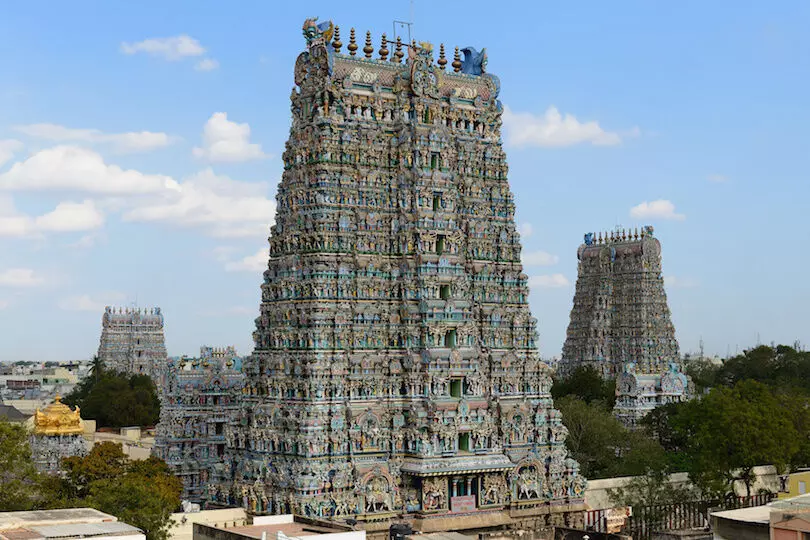Defending Hinduism's pluralism: A stand against Sanatan Board
The push for a centralized governing body i.e. Sanatan Board seems less about preserving Hindu traditions
By B.V.Seshagiri Advocate
Representational Image.
New Delhi: India, renowned for its rich tapestry of religious practices, particularly within Hinduism, is currently facing a significant concern: a viral social media campaign advocating for the creation of a central governing body known as the 'Sanatan Board.' This initiative threatens to undermine the long-standing autonomy of Hindu temples, which have thrived through localized traditions and rituals.
Centralizing temple governance risks eroding the pluralistic essence of Hinduism by imposing a uniform structure on a religion celebrated for its diversity.
Temples as Cultural Pillars:
Hindu temples are much more than mere places of worship; they are vibrant cultural centers intricately linked to local histories and traditions. Each temple across the country embodies unique customs that reflect the specific needs and beliefs of its community. This regional diversity is foundational to Hinduism, enabling various sects and practices to coexist harmoniously. Preserving the autonomy of temples is essential for maintaining this rich variety, allowing local communities to manage their institutions without external interference.
The Role of Endowment Departments:
In southern India, states like Andhra Pradesh, Telangana, Tamil Nadu, Karnataka, Odisha, and Kerala have Endowment Departments tasked with managing temple finances, assets, and donations. These departments ensure that temple revenues are allocated for religious, charitable, and developmental purposes while prioritizing the welfare of pilgrims. Each state operates under its version of the Endowments Act, which governs temple administration. However, some groups argue that government oversight infringes upon traditional practices and the autonomy of temples, advocating for less state control and a return to community-driven management.
Celebrating Local Self-Governance:
A prime example of effective local Self-governance is the ChilkurBalajiTemple, located near Hyderabad. This temple operates independently, managed by a committee that upholds its customs and traditions. Practices such as the “11 circumambulations” for blessings and “108 circumambulations” for fulfilled wishes have been preserved for generations. This model highlights how autonomy allows temples to maintain their distinct identities and unique practices free from state interference.
The Perils of Centralization:
The proposed Sanatan Board poses a direct threat to this delicate balance. Historically, Hindu temples have been decentralized, each maintaining its rituals and governance. A central body with broad powers could impose uniform practices, erasing the regional variations that define Hinduism. Additionally, centralization risks politicizing temples, transforming them into instruments of political influence rather than preserving their spiritual sanctity. In a nation as diverse as India, this could compromise the essence of these religious institutions.
A Quest for Control:
The push for a centralized governing body i.e. Sanatan Board seems less about preserving Hindu traditions and more about consolidating control over temple wealth and assets. Centralizing temples under one authority could lead to financial and political misuse, diverting resources from their intended spiritual and charitable purposes. Instead of fostering spiritual growth, temples might become entangled in the ambitions of a central body, losing their unique identities and relevance to local communities.
Emphasizing Local Autonomy:
There is little justification for the creation of a centralized governing body for Hindu temples. Local management committees—comprising priests, community leaders, and devotees—have effectively governed these institutions for centuries. Strengthening these existing structures would be a more respectful and effective way to ensure proper governance. Local committees are better equipped to address the specific needs of their temples and communities, preserving the sanctity and traditions of these sacred spaces.
Conclusion:
Protecting Autonomy: A viral social media campaign advocating for the creation of the Sanatan Board reflects a political effort to centralize control over Hindu temples, potentially diverting assets into political hands and threatening their autonomy and the religious freedoms enshrined in the Indian Constitution. This centralization risks imposing uniformity on a diverse tradition, diluting unique practices and local customs.
A significant segment of the Hindu community opposes the Sanatan Board and advocates for its rejection, emphasizing the need to strengthen existing local self-governance structures. Ensuring that temples can continue to fulfill their spiritual, cultural, and community roles without external interference is essential for preserving the diversity of Hinduism and safeguarding the autonomy of its temples.